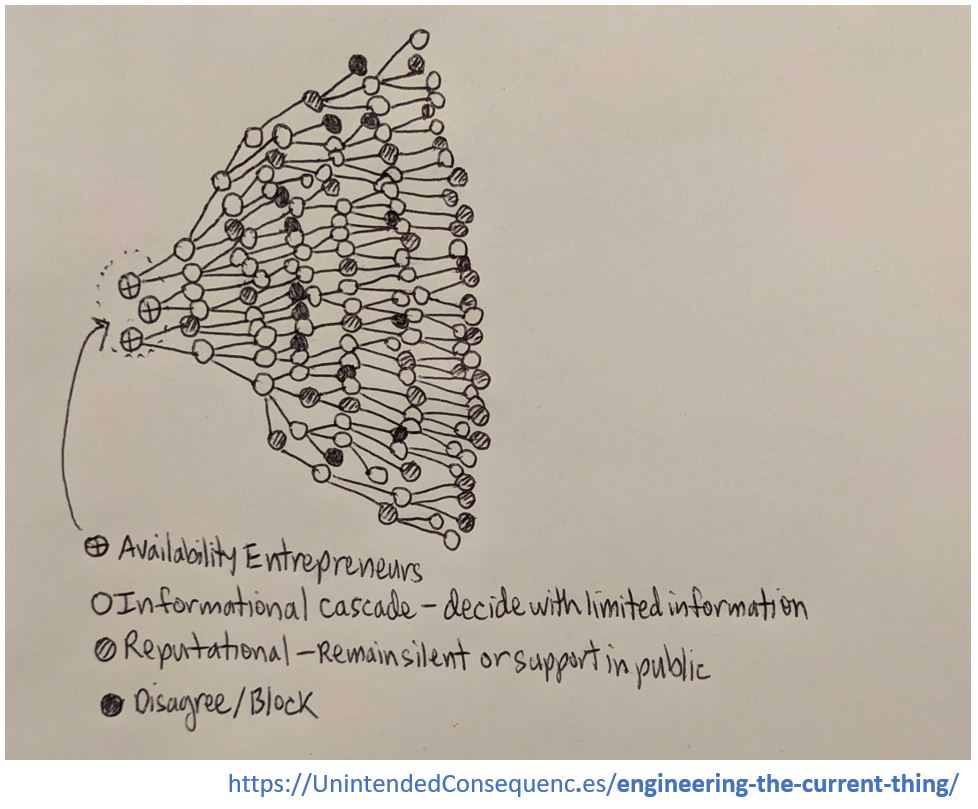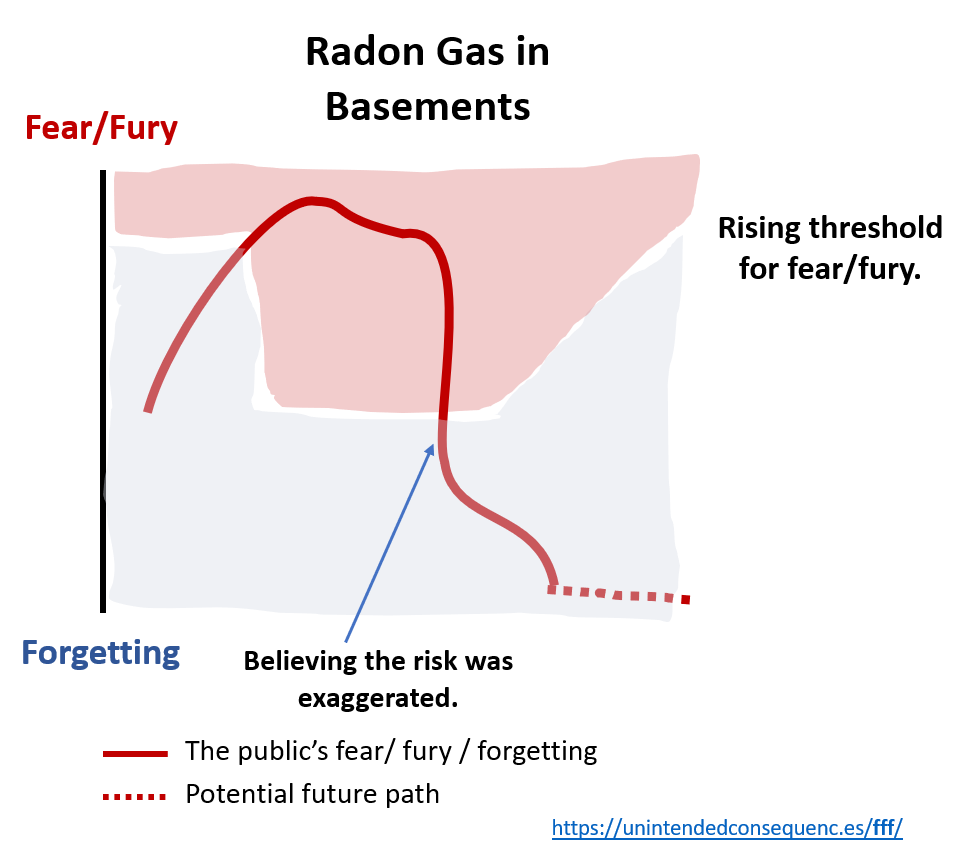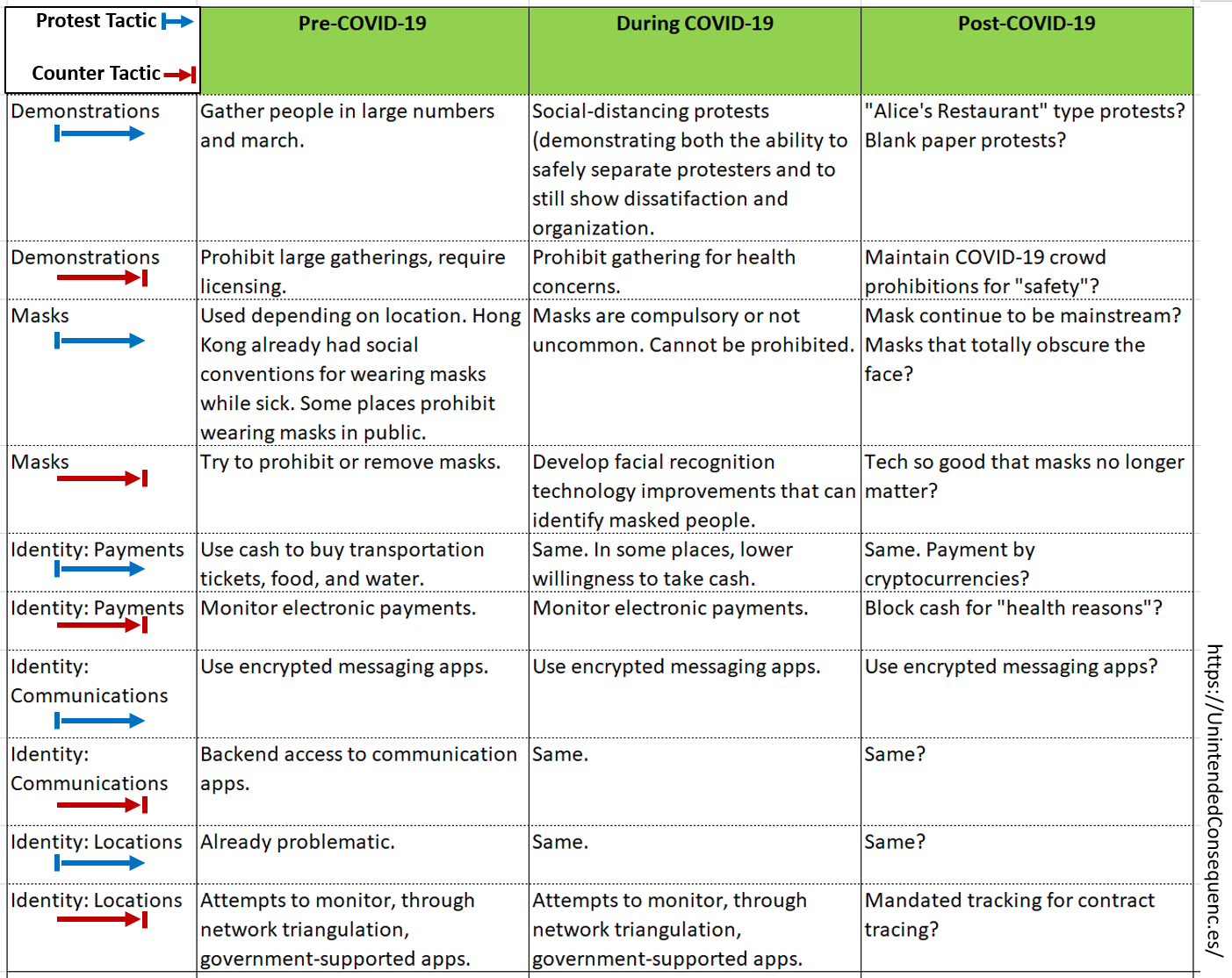If you pay attention online you might have heard of “The Current Thing.”
What’s The Current Thing? The Current Thing is any concept that grabs hold of public attention, sometimes out of nowhere, and which demands an answer: are you for or against?
I also like Marc Andreessen’s explanation.
If not supporting it gets you disinvited from the dinner party, it’s the current thing.
— Marc Andreessen (@pmarca) April 5, 2022
But where does The Current Thing come from? Does it just happen or is it made? How does it work?
And so, I read through the paper “Availability Cascades and Risk Reputation,” after Andreessen mentioned it as a seminal work on The Current Thing. Here’s how the paper begins: Continue reading “Engineering the Current Thing”



